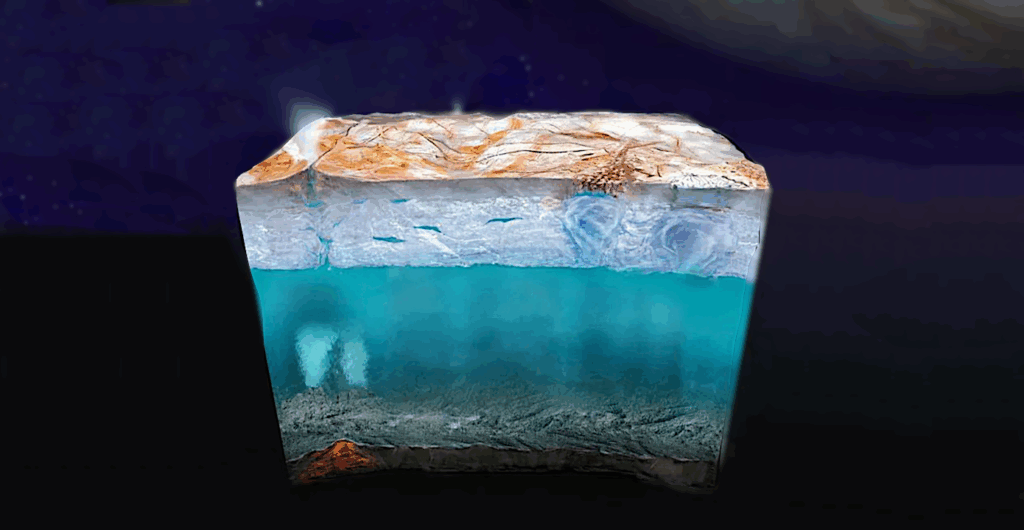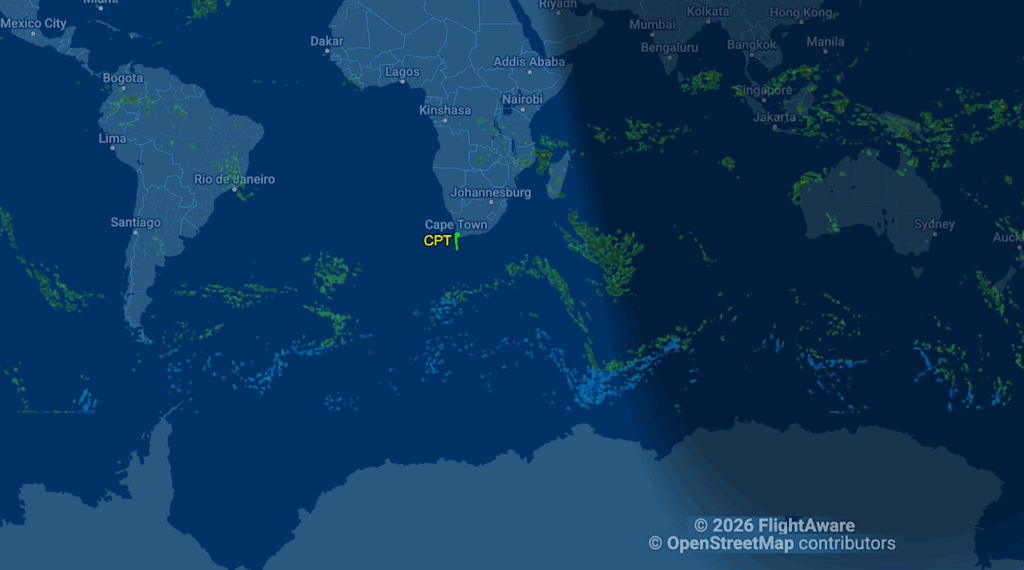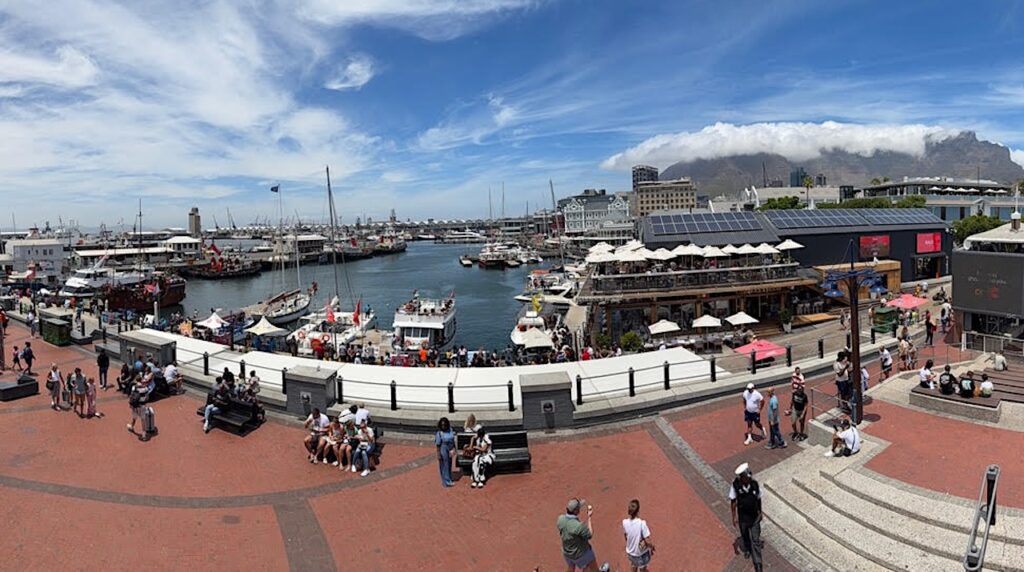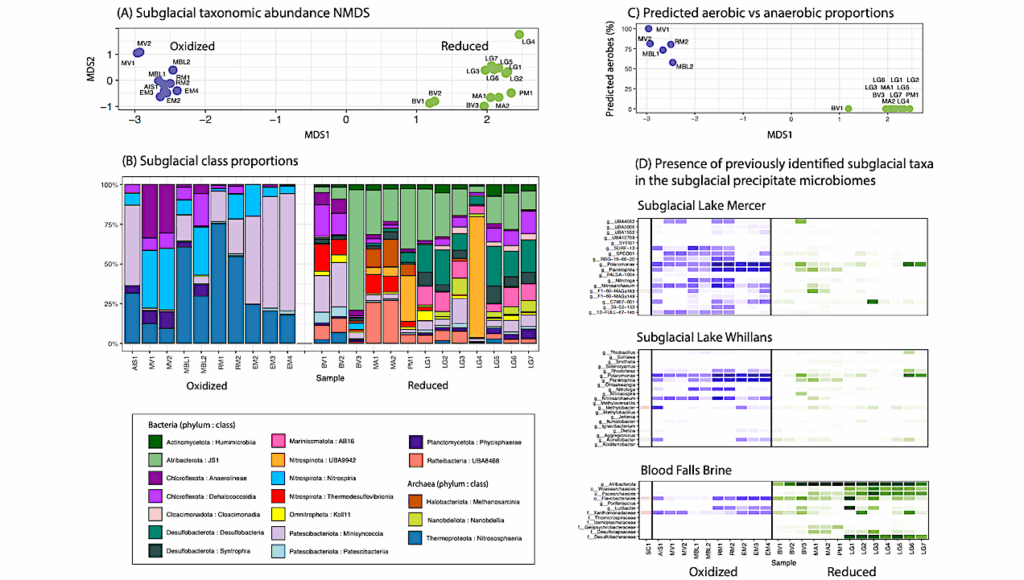The First Recorded Hard Substrate Sessile Benthic Community Far Beneath an Antarctic Ice ShelfFrontiers in Marine Science
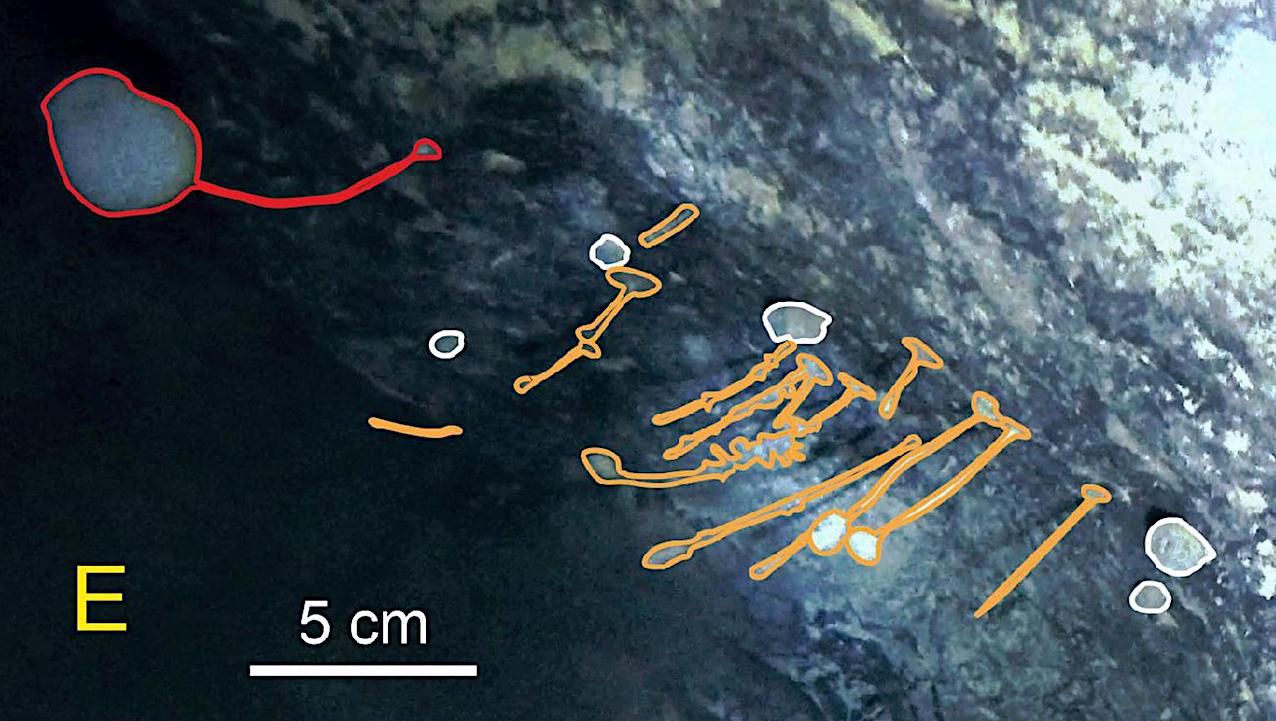
The seafloor beneath floating ice shelves accounts roughly a third of the Antarctic’s 5 million km2 of continental shelf.
Prior to this study, our knowledge of these habitats and the life they support was restricted to what has been observed from eight boreholes drilled for geological and glaciological studies.
The established theory of sub-ice shelf biogeography is that both functional and taxonomic diversities decrease along a nutrient gradient with distance from the ice shelf front, resulting in a depauperate fauna, dominated by mobile scavengers and predators toward the grounding line.
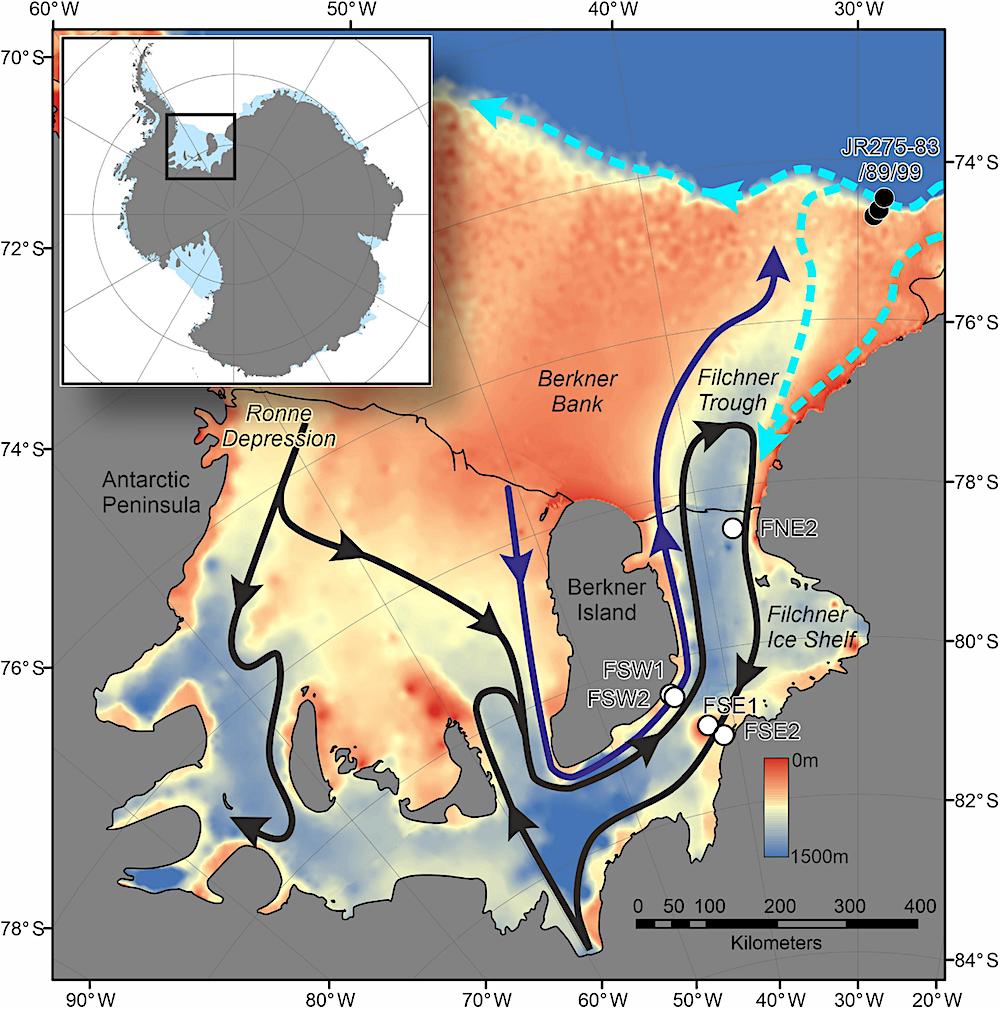
Dimensions and close-ups of the boulder, highlighting where life is clearly visible (A–E) and the top of the boulder where no obvious life is visible (F). The taxa visible on the boulder: Red, large stalked sponge; White, sponge; Orange, stalked taxa [possible sponge, ascidians, hydroid, barnacles, cnidaria (e.g., tubularia), and polychetes]. — Frontiers in Marine Science
Mobile macro-benthic life and mega-benthic life have been observed as far as 700 km under an ice shelf. New observations from two boreholes in the Filchner-Ronne Ice Shelf challenge the idea that sessile organisms reduce in prevalence the further under the ice you go.
The discovery of an established community consisting of only sessile, probably filter feeding, organisms (sponges and other taxa) on a boulder 260 km from the ice front raises significant questions, especially when the local currents suggest that this community is somewhere between 625 km and 1500 km in the direction of water flow from the nearest region of photosynthesis.
This new evidence requires us to rethink our ideas with regard to the diversity of community types found under ice shelves, the key factors which control their distribution and their vulnerability to environmental change and ice shelf collapse.

Map showing location of drill sites on Filchner Ice Shelf (FSW1-2, FSE1-2, and FNE2), comparable samples from continental shelf collected during JR275 as well as the major sub-ice shelf circulation. Black arrows show flows derived from High Salinity Shelf Water (HSSW) from the Ronne Depression. Purple arrow shows the flow from HSSW formed over Berkner Bank (Nicholls, 2004). Ice Shelf Water (ISW) exits along the eastern margin of Filchner Trough, with a possible seasonal influx of modified Warm Deep Water (mWDW) (Darelius et al., 2016). Dashed light blue arrows represent the flow of the slope front and coastal currents (Nicholls et al., 2009). Bathymetry is derived from ETOPO1 (NOAA National Geophysical Data Center, 2009). — Frontiers in Marine Science
Breaking All the Rules: The First Recorded Hard Substrate Sessile Benthic Community Far Beneath an Antarctic Ice Shelf, Frontiers in Marine Science (open access)
Astrobiology



